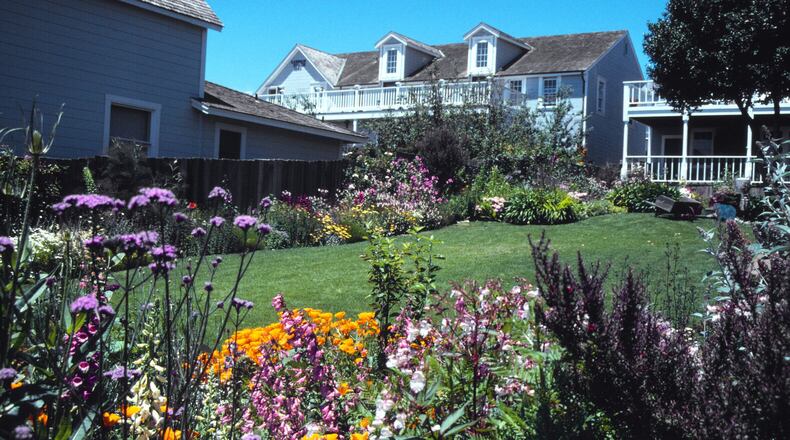The English cottage garden began as a worker’s garden. These were country folks who served on grand estates or farmed small plots in the countryside. In this incredible climate, the workers planted everything they thought beautiful, oblivious of horticultural fashion of the day. Inevitably, they selected flowers that brightened life after the long English winters. Annuals, perennials, shrubs and trees that produced the most glorious color were the most favored. This suggests that at our human roots lies a need for flowers as solace to the disappointments of life.
This is not an expensive garden at all because cottagers knew about the propagation of plants, both sexual by seed and asexual via cutting. This was how cottage gardeners could rehabilitate castoffs and overages from estate or gardens to fill their garden without buying a thing. It’s really a creative process in which these folks made new plants for themselves off the grid. So how could they create such exquisite, world-renowned beauty without a designer? Simple: A love of flowers drives everything.
Everyone deserves an overflowing flower garden for that incredibly romantic old fashioned beauty. The key to success this spring is to grow the most rewarding species that bloom large and plentiful. Return to your grandmother’s favorite flowers, the zinnias and the foxgloves that made old gardens so choice.
The problem at the garden center is these big rangy plants aren’t suited to massed bedding. The originals have been bred into compact dwarf forms that grow very uniform for these special carpet plantings. Plants grown from open pollinated heirloom seed will likely attain their early look and size. For example, the orange marigold of El Dia De Los Muertos celebrations has been shortened from 3 feet to 18 inches or less. Grow Tagetes erecta from seed and you get the original strain abuela grew for her celebrations in Mexico.
Even if you’ve never grown a flower garden, look for old fashioned favorites in seed or seedling at the garden center. These plants are the original forms of today’s annuals that have lost their former stature, or were changed in other ways due to breeding. They are the open pollinated species adopted from England to colonize American gardens.
Above all, they are easily grown when sown right into garden soil, started indoors in pots or purchased at the garden center. Like grandmother, you’ll be able to save seed of your own to grow them again next year. Often these seeds yield genetic surprises because they display natural variations, unlike hybrids, which are uniform. Let them self-sow when their time is up and they may colonize, offering many volunteers to pick through each spring to come.
This list identifies the basic annual and its primary flower color. If it varies, that means there are a wide range of hues available as with zinnias. The last category tells you its form, which will help you visualize how their shapes will look together within your flower beds or borders. Arrange shape and height so all the plants receive equal amounts of full sun, particularly on a south-facing exposure.
If you’re a worker who needs a way to blow off the world at the end of the week, consider spending about $20 on some seeds and start growing. Remember, there are no ugly flower gardens, so plant your heart out. Who knows, perhaps it will become the root of something very old made new again as we return to lots of flowers everywhere.
———
Maureen Gilmer is an author, horticulturist and landscape designer. Learn more at www.MoPlants.com
CLIP AND SAVE: FAVORITE COTTAGE GARDEN ANNUALS
Calendula Pot marigold. Orange, yellow. Bush
Coreopsis Tickseed. Yellow. Bush
Centaurea cornflower. Blue, lavender. Upright
Cosmos. Pink, white. Open/rangy
Hollyhock. Many. Columnar
Larkspur. Blue, purple, white. Columnar
Scabiosa pincushion flower. Many. Upright
Snapdragon. Many. Columnar
Sunflower. Sunset hues. Large/rangy
Sweet pea. Many. Vine
Zinnia. Many. Upright bush
About the Author
Keep Reading
The Latest
Featured

